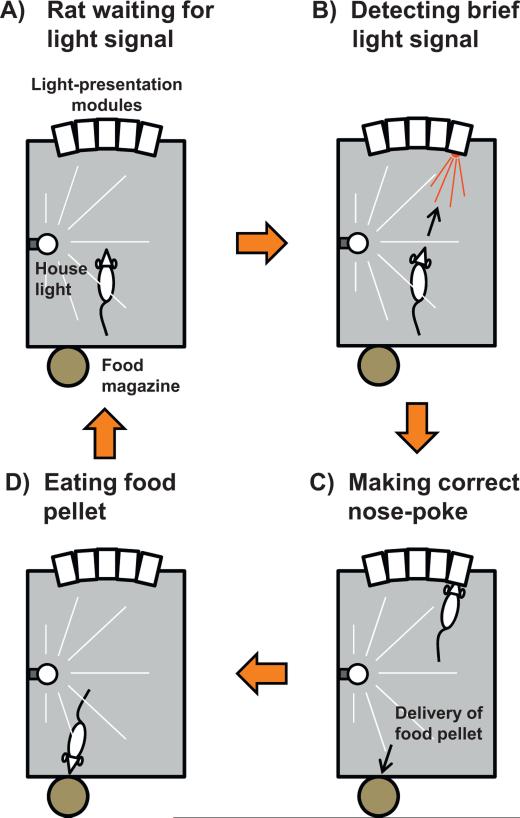Fig. 6.
The 5-choice serial reaction time task. This test measures sustained visual attention in rodents. It uses a sound-attenuated chamber with five light stimulus presentation modules on one rear wall. The chamber is illuminated by a house light (yellow bulb + stripes), which can be turned off upon request (e.g., in order to indicate a failed trial). Each of the five modules is equipped with an infrared photocell beam enabling both light stimulus presentation (e.g., as indicated by the red triangle in B) and detection of a rat's nose-poke in the hole of the module. At the opposite, a reward pellet is delivered from an automated food magazine, but only when the rat has made a correct response. At the start of the test, the rat faces the 5 light-presentation modules (A), focusing visual attention on them (as symbolized by the white triangle). A brief light signal (0.5 s or even less; red triangle) is presented in one of the modules (B). Upon detection, the rat has to move towards this module and make a nose-poke in its hole (C). If so, the trial is recorded as correct and a reward pellet is delivered automatically at the opposite wall from an engine-driven magazine (D). A nose-poke in any other module is counted as an incorrect trial. No nose-poke before a fixed delay is counted as an omission. A nose-poke during the hold period preceding the light signal in the module is considered a premature response. Repeated nose-pokes in the same module despite a light signal that has been shifted to another module are accounting for perseverative responses. In case of a correct response, once the pellet has been collected, the next trial is started after a fixed (light signal occurrence can be anticipated by the rat) or a variable (light signal occurrence cannot be anticipated by the rat) hold period.

